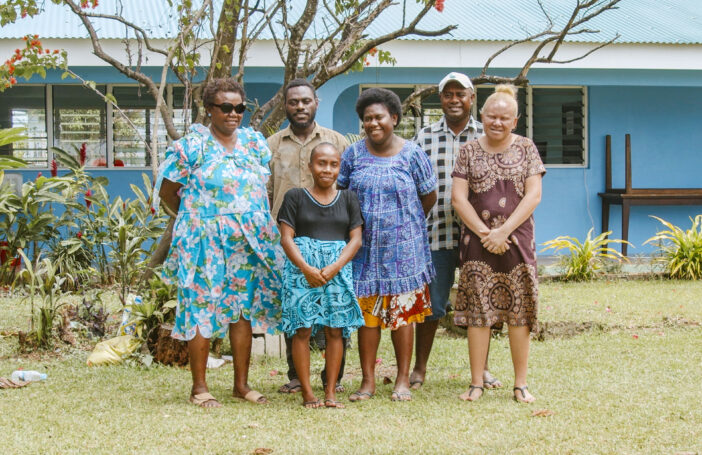When it comes to equity funding in the Pacific, there has never been a lack of anecdotal evidence of some success and many failures. Many businesses are stuck in a “vicious circle”. They are starved of much needed investment and unable to raise funds to invest in quality management skills and capital equipment. Lack of management know-how is in turn cited by fund managers as the single most inhibiting risk factor to investment.
Private equity in the Pacific is uncommon as a financial instrument, but even in those handfuls of instances where investment funds have been raised, they mostly focus on larger firms.
To investigate the possibility of broadening access to finance for firms of all sizes, the Asian Development Bank engaged John Hardin, an expert on equity investment in the Pacific, to (1) document lessons learned from recent and current private equity funds and facilities in the Pacific (including Kula Funds I/II, the Enterprise Challenge Fund and private equity funds in PNG, Fiji and Samoa), (2) assess the unmet demand for equity investments in the region, and (3) determine the feasibility of a new investment fund targeting smaller firms that could provide funds to allow them to grow and achieve their potential.
Hardin embarked on an exhaustive process, conducting 112 face-to-face interviews with stakeholders across the region, confirming the considerable scale of the problem, both in terms of market gap and unmet demand. Across the board, interviewees agreed that equity investment, coupled with practical business management/development support, is badly needed and that this would contribute to a more vibrant private sector. He also found:
“…an evident market gap in the equity investment market in the Pacific. Private equity funds, such as national provident funds, are risk averse and focus on larger investments in projects operated by experienced management teams. Equity funds that were prepared to invest in medium size projects ($US200,000 – $2/3 million) are either no longer investing or have closed down due to poor performance. Donor supported funds are under review and not currently operating. The two stock exchanges (PNG and Fiji) offer limited fund raising opportunities for medium size business ventures.”[1]
In terms of unmet demand, the analysis found a “pent up demand for equity investments by the full spectrum of SMEs in the region… particularly in the US$250,000 – US$500,000 range.”
However, there are several challenges to creating a new equity fund, including high transactions costs involved in running such a fund and the relatively high-risk profile and low returns on investment that can take a (relatively) long time to be realized. Profitable exits are also difficult in small Pacific economies. The analysis identified agriculture and the agri-business sector as having the greatest potential for expansion together with a positive community impact.
The design of a new Pacific investment fund should incorporate:
- a patient capital approach of up to 10 years with expectations of relatively low returns;
- investments in the range of US$100,000 – US$3m with most expected in the US$250,000 – US$500,000 range;
- operation by an experienced fund management company;
- a pro-active, hands-on yet “light touch” involvement by the fund manager in supported business ventures, particularly on financial management and reporting.
To deal with the problem of poor human capital, a new equity fund would need to be accompanied by a separate, but linked, technical assistance facility to upgrade management skills and capacity. The positive externalities both from the expansion of these businesses as well as the demonstration effect that investments can be successful in the Pacific warrant donor support. Such a design incorporates some of the best features of the experiences of AusAID’s Enterprise Challenge Fund, which is grant-based, and the two Kula funds.
Further debate of this proposal with financial institutions and development partners has identified a number of key issues and opportunities. From the discussions, it is apparent that there is unmet demand for investments of this type that must be addressed if the private sector is to fulfill its potential as the driver of economic growth in the region.
Whatever the final outcome of these discussions, it is clear that we need to find solutions that meet the needs and objectives of successful growing businesses of all sizes in the Pacific region.
Dr Andrea Iffland is the Regional Director of ADB’s Pacific Liaison and Coordination Office in Australia
[1] SME Equity Investment Fund in Pacific Islands. Scoping Study Of Potential Demand and Recommended Fund Design, John Hardin/Asian Development Bank, April 2013






Thanks for this post Andrea – it does a great job of setting out very clearly some of the key issues and challenges and I particularly appreciate the reference to some really important lessons learned through the Kula and ECF experiences. As with most things, it’s really important that donors and others working in this space have a detailed understanding of what the private sector environment is in each country. As this work (and other related activities go forward) I would hope to see 2 things emerge. One is, as you flag in the title of this blog, a coordinated approach between ADB, IFC, AusAID (and others?) based on information sharing, environmental enabling and a commitment to reducing everyone’s transaction costs (not just those of donors) and the other is appropriate recognition given to the place, needs and realities faced by those who populate the private sector(s) of the region rather than an overemphasis being placed on external ‘big’ businesses who have the attraction of (possibly) being able to operate ‘to scale’.